Whereas only two the ten north american species coexist lack
Western Michigan University
Follow this and additional works at:
Part of the

GAP FORMATION: A REPRODUCTIVE ISOLATING MECHANISM FOR PARUS ATRICAPILLUS AND P. CAROLINENSIS IN NORTHERN INDIANA
R eproduced with perm ission of the copyright owner. Further reproduction prohibited w ithout perm ission.
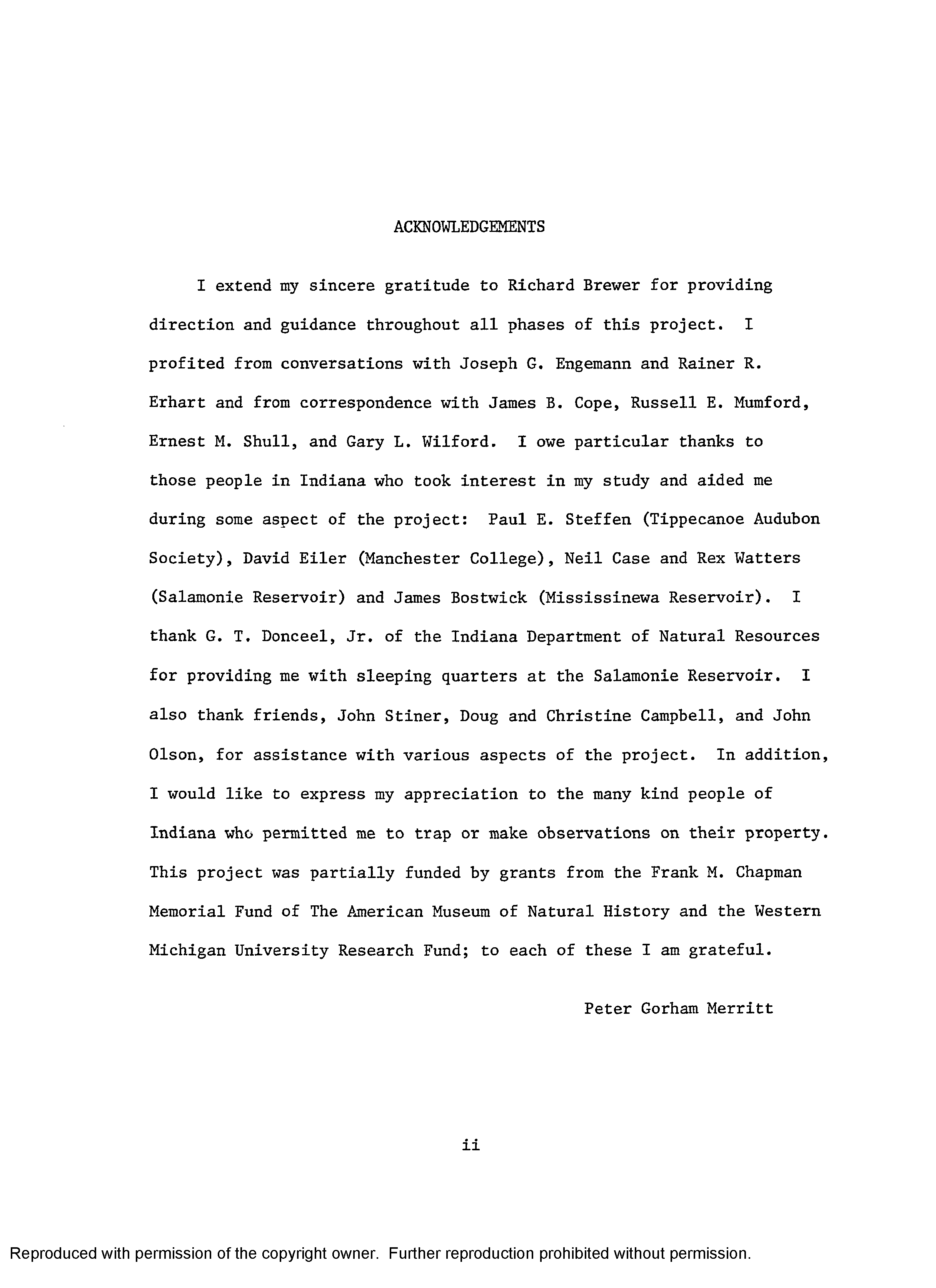
Peter Gorham Merritt
R eproduced with perm ission of the copyright owner. Further reproduction prohibited without perm ission.
1. The sign or "target" for pages apparently lacking from the document photographed is "Missing Page(s)". If it was possible to obtain the missing page(s) or section, they are spliced into the film along with adjacent pages. This may have necessitated cutting thru an image and duplicating adjacent pages to insure you complete continuity.
2. When an image on the film is obliterated with a large round black mark, it is an indication that the photographer suspected that the copy may have moved during exposure and thus cause a blurred image. You will find a good image of the page in the adjacent frame.
5. PLEASE NOTE: Some pages may have indistinct print. Filmed as received.
University Microfilms International
300 North Zeeb Road
Ann Arbor, Michigan 48106 USA
MERRITT, Peter Gorham
GAP FORMATION: A REPRODUCTIVE ISOLATING
Xerox University Microfilms, Ann Arbor, Michigan 48106
R eproduced with perm ission o f the copyright owner. Further reproduction prohibited without perm ission.
| CHAPTER | PAGE | |
|---|---|---|
| I | 1 | |
| 1 |
The Range Relationship of P. atvioccpitlus
| CHAPTER |
|
46 |
|
|---|---|---|---|
| IX | |||
| X | 47 | 49 | |
| 47 | |||
| Possible Explanations for the Gap . . . . . . | |||
| IX | 53 | ||
|
55 | ||
|
61' | ||
| 67 | |||
| 69 | 75 | ||
R eproduced with perm ission of the copyright owner. Further reproduction prohibited without perm ission.

oaroZinensisin northern Indiana as determined
| 10. |
|
29 | ||
|---|---|---|---|---|
| 35 | ||||
| 11. | 36 | |||
| 12. |
|
for trapping station 3 . . . | 37 | |
| 13. |
|
38 | ||
| 14. | for trapping station 5 . . . | 39 | ||
| 15. | for trapping station 6 . . . | 40 | ||
| 16. | ||||
oaroZinensisin northern Indiana as determined
by soliciting song responses.................... 44
showing approximate distributions of Parus
atvioapillus and P. oavolinensis and records
of migration in P. atvioap'LZlus................. 63
| TABLE | Number of Downy Woodpeckers, Tufted Titmice and | PAGE |
|---|---|---|
| 1. |
White-breasted Nuthatches banded at each trap
CHAPTER I
INTRODUCTION
1
R eproduced with perm ission of the copyright owner. Further reproduction prohibited without perm ission.
are essentially allopatric and evidence suggests that, owing to the birds ecological similarity, competition takes place where the ranges adjoin (Brewer, 1963).
The Range Relationship of
P. atrioapiZZusand P. oaroZinensis
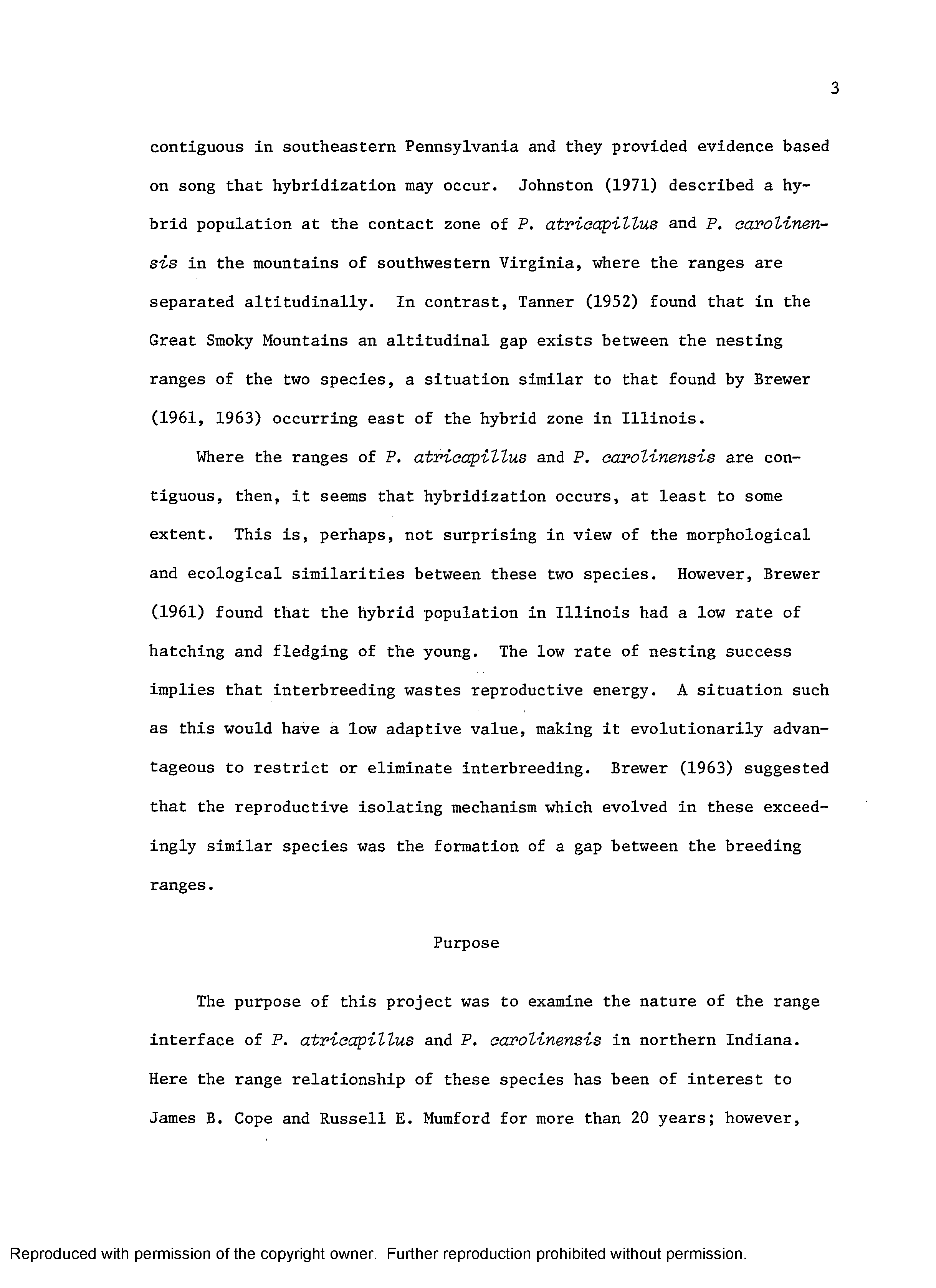
3
R eproduced with perm ission of the copyright owner. Further reproduction prohibited w ithout perm ission.
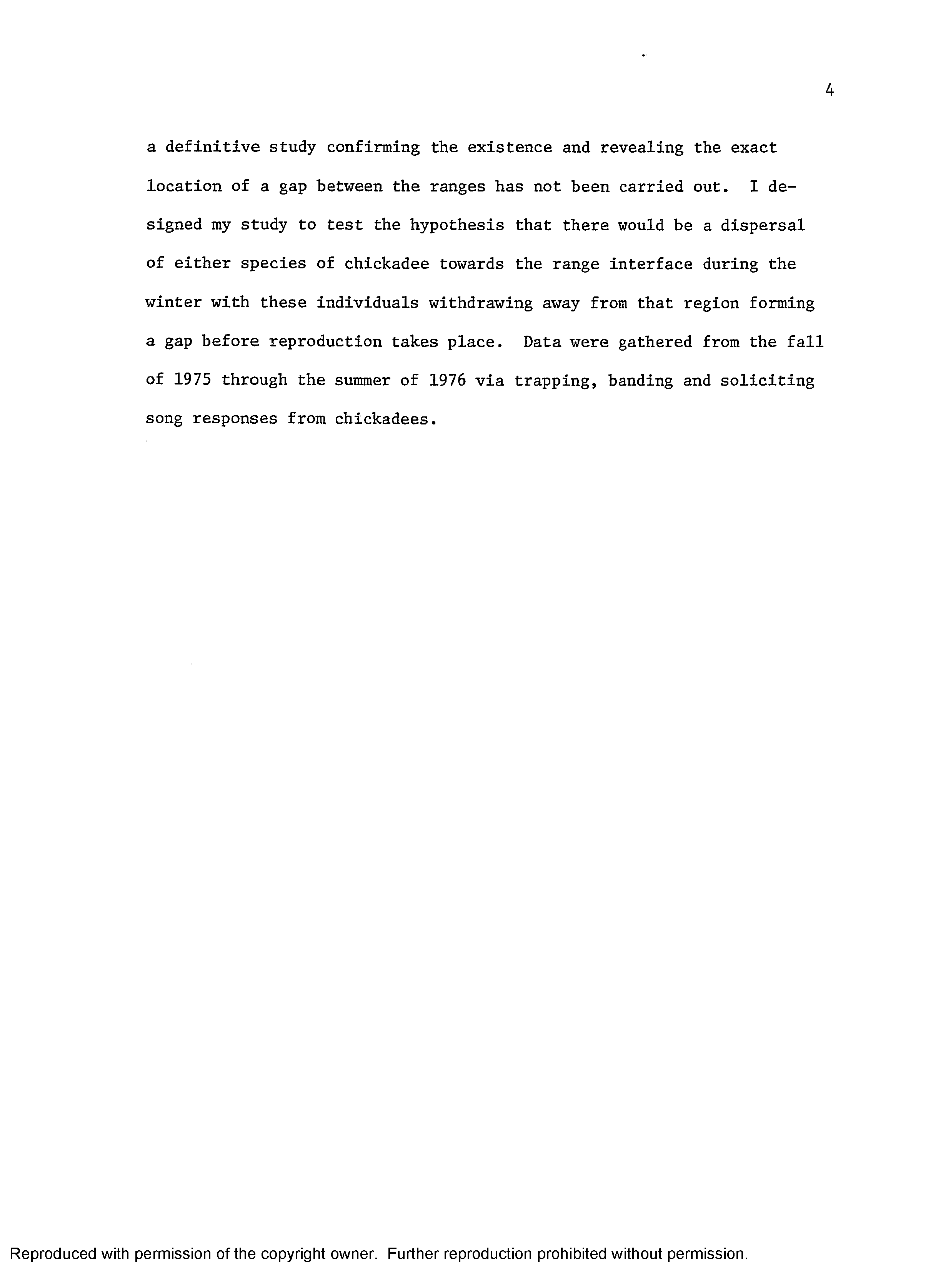
CHAPTER I I
STUDY AREA
references to habitat will be provided. Additional information pertaining to climate and other aspects of natural history for the area may be found in an authoritative series of papers edited by Lindsey (1966).
Drainage and Physiography
R eproduced with perm ission of the copyright owner. Further reproduction prohibited w ithout perm ission.
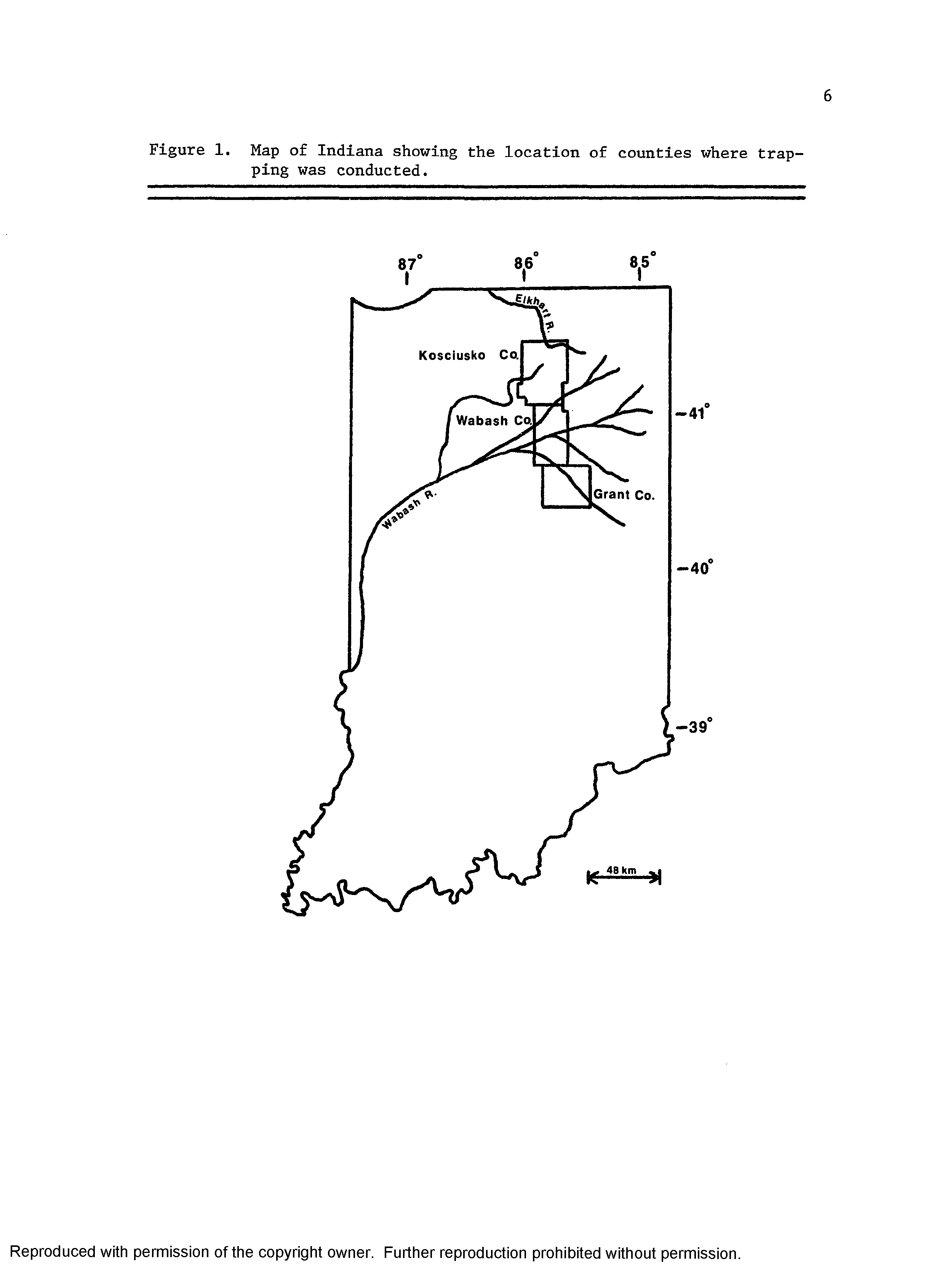
| 87 | Kosciusko | 8.5 | |
|---|---|---|---|
|
W abash Co.
R eproduced with perm ission of the copyright owner. Further reproduction prohibited w ithout perm ission.
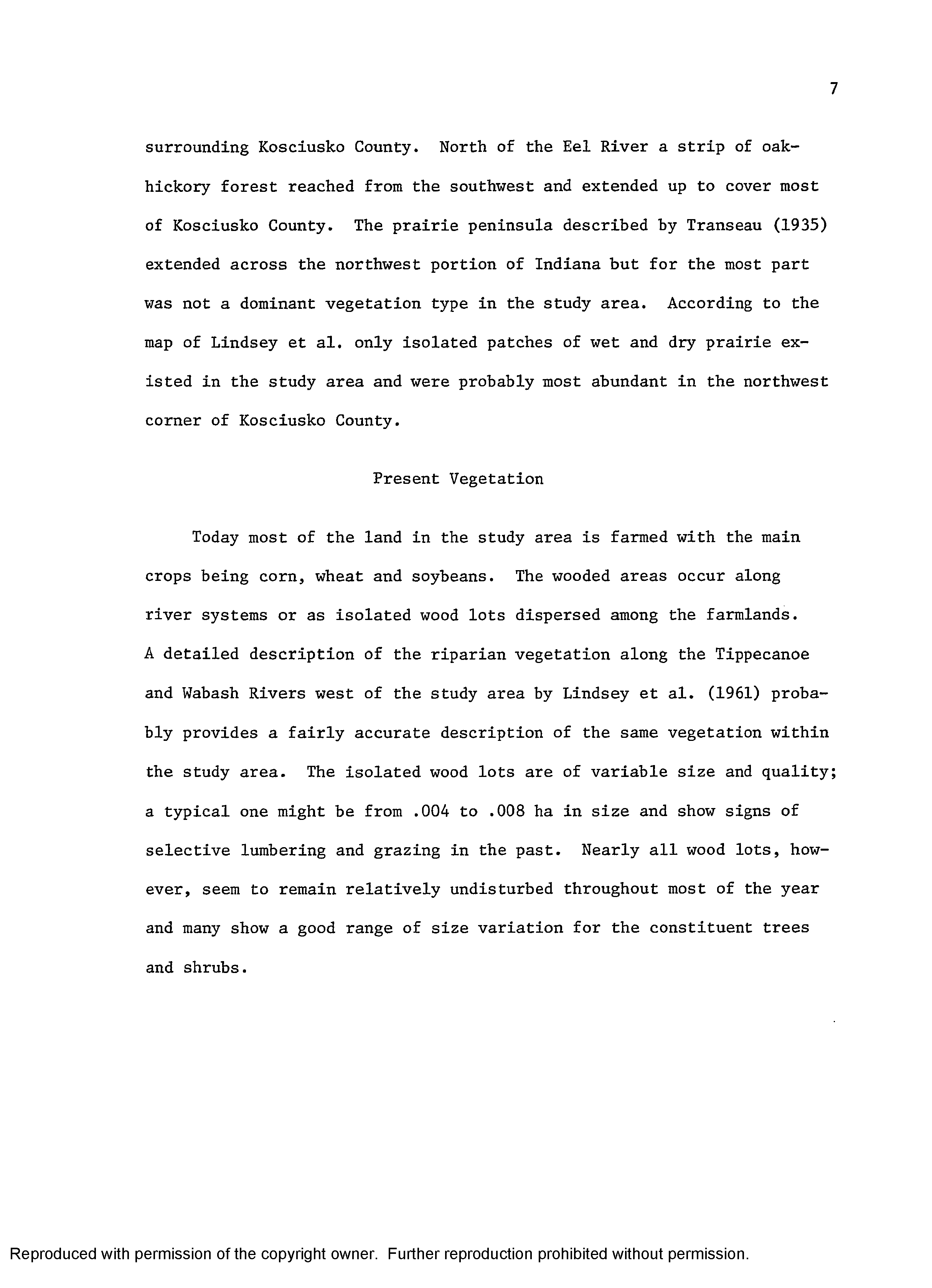
A detailed description of the riparian vegetation along the Tippecanoe and Wabash Rivers west of the study area by Lindsey et al. (1961) probably provides a fairly accurate description of the same vegetation within The isolated wood lots are of variable size and quality; the study area.
a typical one might be from .004 to .008 ha in size and show signs of selective lumbering and grazing in the past. Nearly all wood lots, however, seem to remain relatively undisturbed throughout most of the year and many show a good range of size variation for the constituent trees and shrubs.
Preliminary field work in 1963 and 1966 by Richard Brewer and by
me in 1975 indicated that P. atrioccp'iZ'lusoccurred near the city of
ship of the ranges, a series of trapping stations was set up on a north-
south line transecting the range interface. Criteria for trapping
areas chosen; the exact location and ownership of each site is listed
in Appendix 1.
al. (1969). The woods had no standing or running water; however, it
lies only about a half mile from the Tippecanoe River. Several acres of
Figure 2. Map of the study area showing the location of the six
trapping stations.
R eproduced with perm ission of the copyright owner. Further reproduction prohibited without perm ission.

The woods finally chosen for the fourth trapping station was a diverse one of about .008 ha. The southern part of the woods was mesic, although most of the larger trees had been cut down within the past several years and many tree tops were left on the forest floor making it very dense in spots. The eastern part of the woods was very wet and the northwest portion of the woods consisted of a few acres of red maple swamp.
To the east, the swamp graded into a few acres of young oak-hickory woods.The adjacent property to the north and east of the trapping area was also wooded.

